 |
| A WWII pillbox alongside a public right of way near Potters Bar |
A member of the
Hertfordshire Walker Facebook Group asked for recommendations for walks that pass any points of World War history.
There are so many that I decided to put together a short article with a list of walks to help those who are interested in WWII history find sites of interest when they are out walking.
As well as running Hertfordshire Walker, I also created and edit
The North Mymms History Project which has several articles about WWII history and features some of the sites you will see as you follow our walks.
But first some background information for those new to WWII local history.
The
Outer London Defence Ring, which was a defensive ring built around London during the early part of WWII, passes through Hertfordshire. It was intended as a defence against a German invasion.
North of London the ring followed a path similar to the route now taken by the M25 motorway. It stretches from Watford, following the River Colne, through Potters Bar, and on through Cuffley to Nazeing.
Many pillboxes and anti-tank traps are still visible at points along the ring. And there are WWII defences outside the ring, built to protect strategic installations such as airfields. We have walks that explore all these areas.
The walks
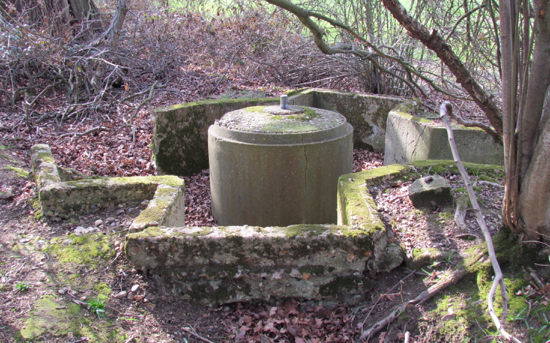 |
| The spigot mortar emplacement E of Brookmans Park |
If you follow
Walk 24 you will pass a well-preserved
spigot mortar emplacement (location -
https://w3w.co/gloves.spices.tuck). This is hidden in the hedgerow north-east of the Brookmans Park Transmission Station, which has
a Cold War bunker beneath it.
During the Cold War that followed WWII, the BBC drew up plans for a Wartime Broadcasting Service (WTBS) to be activated in the event of a nuclear attack. A bunker, built underneath the Brookmans Park Transmitting Station, was one of 11 at sites around the country. The twin-wave broadcasting facility was considered to be a crucial part of the nation’s communications strategy in the event of nuclear war.
 |
| The remains of a Tett turret alongside Walk 24 |
Also on Walk 24 you will pass the remains of a
Tett turret (location -
https://w3w.co/issue.cheer.heats). According to
Wikipedia, the Tett turret was "a type of hardened field fortification built in Britain during the invasion crisis of 1940–1941".
"It was a small circular pillbox named after its inventor H.L. Tett. It comprised a revolving concrete turret mounted on a ball race that allowed it to be turned easily. The turret was set above a pit; in early designs, the pit was formed by a standard section of concrete pipe 4 feet (1.2 m) in diameter. The turret was a 20-inch (50 cm) high truncated cone of reinforced concrete weighing 1,456 pounds (660 kg) with a single embrasure and several spy holes."
On the same walk, if you take a short diversion along Woodside Lane at point 14, you will find a couple of tank traps (location -
https://w3w.co/rots.wedge.soon), see image below.
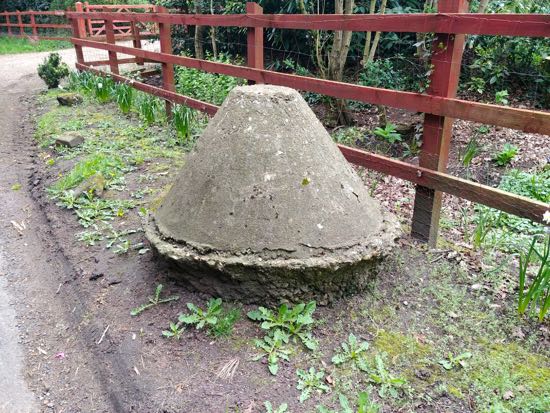 |
| A tank trap along Woodside Lane, Bell Bar |
Near the end of
Walk 3 you will pass a group of tank traps at the junction of Bradmore Lane and Station Road in Brookmans Park (location -
https://w3w.co/frosted.ropes.bags), see image below.
 |
| Tank traps at the junction of Bradmore Lane and Station Road |
For those interested in pillboxes, there are several walks that pass these fascinating structures.
 |
| One of the pillboxes on Walks 32 and 69 |
Walk 32 and
Walk 69, pass two
WWII pillboxes alongside a public right-of-way running across an abandoned golf course at Potters Bar.
 |
| One of the Shenley pillboxes |
Two walks in the Shenley area,
Walk 135 and
Walk 136 pass two more WWII pillboxes.
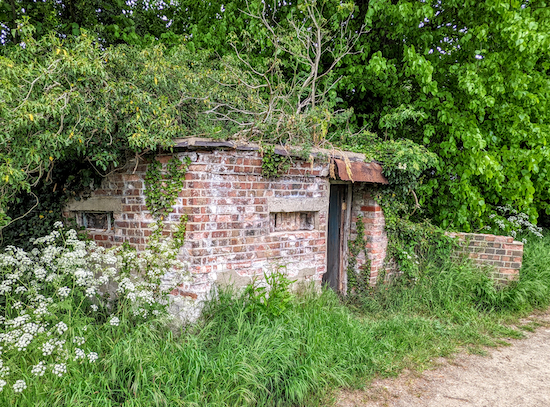 |
| The WWII pillbox to the left of Hunsdon footpath 10 |
In the Hunsdon area, we have two walks,
Walk 144 and
Walk 177, which feature a WWII airfield and pillboxes.
If you follow
Walk 61, which is north of Welwyn, you will pass a line of WWII anti-tank obstacles.
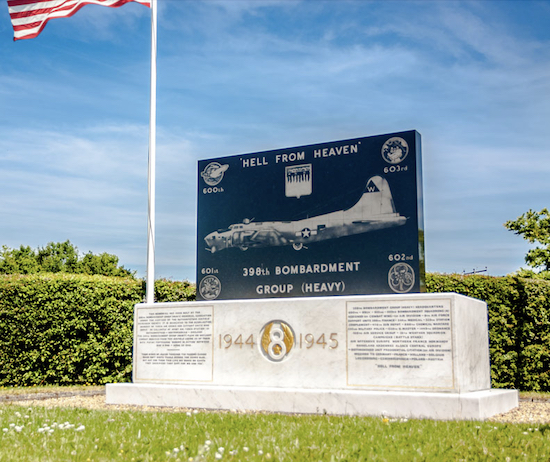 |
| The museum at Nuthampstead |
In Nuthampstead, while following
Walk 142, you will start your walk at a pub, The Woodman Inn. Behind the pub is a museum about the 55th Fighter Group and subsequently the 398th Bombardment Group of the U.S. Army Air Forces.
 |
| A runway at Nuthampstead, now part of the Hertfordshire Way |
You will cross an abandoned airfield and walk along a runway where B-17 Flying Fortress heavy bombers took off on missions over occupied Europe.
Walk 141 also starts at the museum but doesn't cross the former airfield.
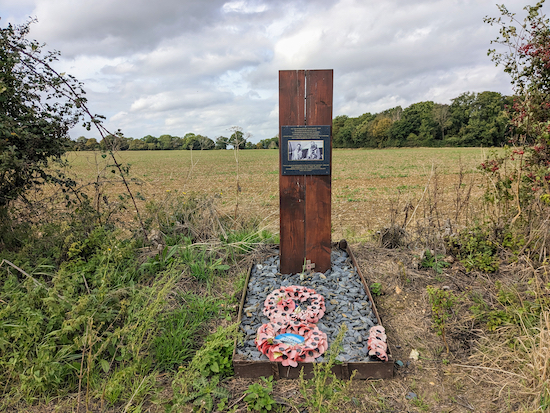 |
| The memorial for the Mosquito crew at Hunstanton |
There is a memorial at Hunstanton for the crew of a Mosquito aircraft which crashed resulting in the loss of two lives. You will
pass the site on Walk 244.
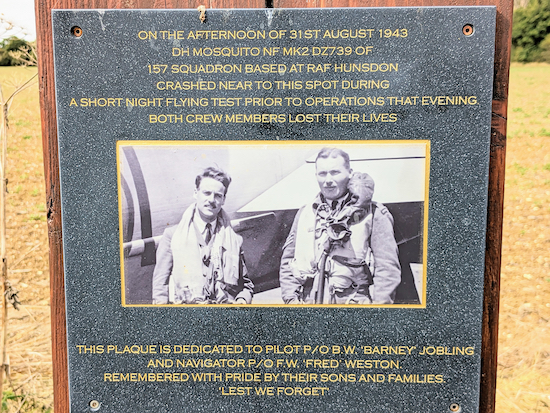 |
| The memorial for the Mosquito crew at Hunstanton |
Just beyond point 3 in Walk 180: Cole Green North-West Loop you will come across a WWII bunker (location -
https://w3w.co/stuff.fired.create) see image below.
 |
The remains of the WWII bunker
Image courtesy of Gerry Gross |
During WWII there was
an airfield at Panshanger which was used as a decoy for the main airfield at the de Havilland Aircraft Company Limited site in Hatfield.

















No comments:
Post a Comment
Comments and feedback
If you try any of the walks on this site, please let us know what you thought of them by adding a comment here or on our members-only Facebook group. Comments here are checked before they are published. Comments on the Facebook group go live immediately.